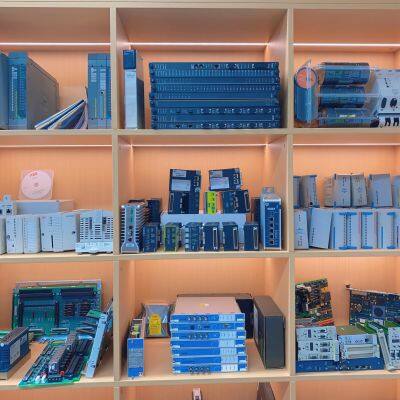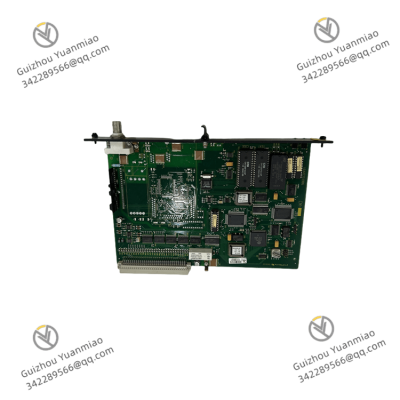Descripción del producto
I. Funciones del producto
El DEIF CM-2 es un módulo profesional de gestión de suministro de energía y se?ales que actúa como un "sistema nervioso central" en todo el sistema de energía. Es responsable de coordinar y gestionar el suministro de energía, así como de procesar varios tipos de se?ales. Principalmente sirve a campos con requisitos extremadamente altos de estabilidad de energía y precisión de se?ales, como la generación de electricidad, la distribución de energía y la automatización industrial.
(I) Funciones de gestión de suministro de energía
Entrada de voltaje de amplia gama y salida estable
El DEIF CM-2 es compatible con una variedad de voltajes de entrada comunes, incluyendo diferentes niveles como AC 220V - 480V y DC 24V - 220V. Esta amplia adaptabilidad de voltaje le permite ser aplicado de forma flexible en diversos entornos de energía complejos. En términos de salida, puede proporcionar una salida de energía DC 24V de alta precisión y estable, con una precisión de voltaje de hasta ±1%, ofreciendo un soporte de energía estable y confiable para los equipos conectados y garantizando el funcionamiento normal del equipo en diferentes condiciones de trabajo. Por ejemplo, en algunas líneas de producción automatizadas con requisitos extremadamente altos de estabilidad de energía, la salida estable del PSM-1 garantiza el control preciso de los equipos de producción y evita los errores de producción causados por las fluctuaciones de voltaje.
Conversión de energía eficiente y características de ahorro de energía
Este módulo adopta una tecnología avanzada de conversión de energía, con una eficiencia de conversión de energía de más del 90%, lo que reduce en gran medida la pérdida de energía durante el proceso de conversión. A través del dise?o optimizado del circuito y algoritmos de gestión de energía inteligentes, el PSM-1 puede ajustar dinámicamente la potencia de salida según la demanda real de carga. Reduce su propio consumo de energía en condiciones de carga ligera para lograr un funcionamiento de ahorro de energía. Tomando como ejemplo una sala de equipos de bajo consumo con múltiples dispositivos, después de utilizar el DEIF CM-2, el consumo mensual de energía se reduce aproximadamente un 10% en comparación con la situación anterior, reduciendo efectivamente los costos de funcionamiento.
Mecanismo integral de protección de suministro de energía
Para hacer frente a diversas situaciones anormales que pueden ocurrir en el sistema de energía, el CM-2 está equipado con funciones integrales de protección de suministro de energía. Tiene capacidad de protección contra sobretensión: cuando el voltaje de entrada supera el umbral de seguridad establecido (por ejemplo, AC 550V o DC 250V), puede cortar rápidamente la salida de energía para prevenir da?os en los equipos aguas abajo causados por un voltaje excesivamente alto. Al mismo tiempo, también tiene función de protección contra sobrecorriente: cuando la corriente de salida supera el valor nominal (por ejemplo, 5A), activa automáticamente medidas de limitación de corriente para evitar fallos de equipos o riesgos de seguridad como incendios causados por una corriente excesiva. Además, el CM-2 también está integrado con función de protección contra cortocircuito. Una vez detectado un cortocircuito en el terminal de salida, puede cortar el suministro de energía en un tiempo extremadamente corto (menos de 1ms) para proteger la seguridad del equipo y todo el sistema de energía. En un incidente de corte de energía en una fábrica, una corriente alta repentina fue causada por un cortocircuito en la línea externa. La función de protección contra cortocircuito del CM-2 se activó rápidamente, evitando con éxito que una gran cantidad de equipos en el taller se da?aran por el impacto de la corriente de cortocircuito y reduciendo enormes pérdidas económicas para la empresa.

(II) Funciones de monitoreo y procesamiento de se?ales
Adquisición de se?ales de múltiples tipos y medición de alta precisión
El DEIF CM-2 tiene una fuerte capacidad de adquisición de se?ales y puede monitorear múltiples tipos de se?ales simultáneamente. Admite 4 canales de entrada analógica (AI), que pueden recopilar se?ales analógicas como voltaje, corriente y temperatura. El rango de se?al de entrada es amplio: por ejemplo, el voltaje puede soportar diferentes rangos como 0 - 10V y 0 - 500V, y la corriente puede soportar rangos como 0 - 5A y 0 - 100A. Tiene una resolución de hasta 16 bits y una precisión de medición de ±0.2% FS (precisión a plena escala). A través de estas adquisiciones de se?ales analógicas de alta precisión, se pueden obtener con precisión los datos en tiempo real de varios parámetros en el sistema de energía, proporcionando una base confiable para el análisis y control posteriores. Por ejemplo, en el monitoreo del estado de funcionamiento de los transformadores de energía, el CM-2 puede recopilar con precisión se?ales analógicas como la temperatura del devanado del transformador y el nivel de aceite, y detectar rápidamente situaciones anormales como posible sobrecalentamiento del transformador. Al mismo tiempo, también tiene 8 canales de entrada digital (DI) para monitorear se?ales digitales como el estado del interruptor y las se?ales de funcionamiento/parada del equipo. Puede responder rápidamente a los cambios en las se?ales externas con un tiempo de respuesta de menos de 1ms, garantizando el dominio en tiempo real del estado del equipo.
Filtrado de se?ales y procesamiento anti-interferencia
En entornos de energía complejos, las se?ales se ven fácilmente afectadas por diversas interferencias, lo que conduce a datos inexactos o fallos de equipos. El DEIF CM-2 adopta una tecnología avanzada de filtrado de se?ales y medidas anti-interferencia, y está integrado con una variedad de filtros digitales, como filtros pasa-bajos, filtros pasa-altos y filtros pasa-banda. Puede seleccionar un método de filtrado adecuado según diferentes escenarios de aplicación y características de se?ales, eliminando efectivamente el ruido y los componentes de interferencia en las se?ales y mejorando la calidad de la se?al. Al mismo tiempo, también tiene un buen dise?o de compatibilidad electromagnética (EMC). A través de una carcasa blindada metálica, un dise?o de conexión a tierra razonable y un dise?o optimizado de los circuitos internos, puede resistir efectivamente las interferencias electromagnéticas externas y garantizar la precisión y estabilidad del monitoreo y procesamiento de se?ales. En el monitoreo de equipos de energía cerca de fuentes de interferencia electromagnética fuerte como motores grandes y convertidores de frecuencia, el CM-2 puede recopilar y procesar se?ales de forma estable sin verse afectado por las interferencias, proporcionando un fuerte soporte para el funcionamiento confiable del equipo.
Funciones de análisis de se?ales y diagnóstico de fallas
El CM-2 no solo recopila y transmite se?ales simplemente, sino que también tiene fuertes capacidades de análisis de se?ales y diagnóstico de fallas. A través del microprocesador integrado y algoritmos profesionales, puede realizar un análisis en tiempo real de las se?ales recopiladas, calcular el valor eficaz, el valor pico, el valor promedio, etc. de varios parámetros de energía, y compararlos con los umbrales preestablecidos. Una vez detectada una se?al anormal, como una desviación de voltaje que exceda ±5% o un contenido de armónicos de corriente que supere el 10%, el CM-2 puede determinar rápidamente el tipo y la ubicación de la falla, y cargar la información de la falla al sistema de monitoreo de manera oportuna a través de interfaces de comunicación como RS485 o bus CAN. Al mismo tiempo, activa la salida de alarma local para recordar a los personal de operación y mantenimiento que manejen el problema de manera oportuna. Por ejemplo, en una gran granja eólica, el CM-2 se instala en el gabinete de control de cada aerogenerador para monitorear en tiempo real varios parámetros de funcionamiento del aerogenerador. Cuando la corriente del generador de un cierto aerogenerador fluctúa anormalmente, el CM-2 analiza rápidamente que se debe a una carga desigual causada por la desviación del ángulo de la pala del aerogenerador, y envía la información de la falla al centro de monitoreo de manera oportuna. El personal de operación y mantenimiento ajusta el ángulo de la pala de manera oportuna en base a esta información, evitando el da?o del aerogenerador debido a la sobrecarga y garantizando la generación normal de electricidad de la granja eólica.
II. Parámetros técnicos

III. Application Scenarios
(I) Power Generation Field
Generator Set Control System
In various types of generator sets, such as diesel generator sets, gas generator sets, and wind turbine generator sets, the DEIF CM-2 plays a crucial role. It is responsible for collecting various operating parameters of the generator set, such as the engine speed, oil temperature, oil pressure, and the generator's output voltage, current, frequency, etc., and conducts real-time monitoring and analysis of these parameters. By communicating with the controller of the generator set, the CM-2 can adjust the operating status of the generator set according to the monitored parameters to achieve precise control of the generator set. For example, in a diesel generator set, when the load suddenly increases and causes the generator's output voltage to drop, the CM-2 will feed back the voltage signal to the controller in a timely manner. The controller adjusts the throttle opening of the diesel engine according to the preset control strategy, increases fuel supply, and raises the engine speed, thereby restoring the generator's output voltage to the normal level. At the same time, the CM-2 can also perform real-time diagnosis of faults in the generator set, such as engine overheating, low oil pressure, generator short circuit, etc. Once a fault is detected, it immediately triggers an alarm and takes corresponding protective measures, such as shutdown protection, to ensure the safe operation of the generator set and reduce equipment damage and maintenance costs.
Distributed Energy System Integration
With the rapid development of distributed energy sources, such as solar photovoltaic power generation and small hydropower, connecting these distributed energy sources to the power grid and achieving efficient management has become an important issue. The DEIF CM-2 can be used as a key interface device between the distributed energy system and the power grid. It is responsible for monitoring parameters such as the output power, voltage, and frequency of the distributed energy sources, and matching and coordinating them with the operating parameters of the power grid. Through real-time monitoring and control, the CM-2 can realize the stable connection and efficient utilization of distributed energy sources, improve energy utilization efficiency, and reduce the impact on the power grid. For example, in a distributed solar photovoltaic power generation system, the CM-2 monitors the output voltage and current of the photovoltaic panels in real time, and adjusts the working status of the inverter according to the light intensity and load demand. This ensures that the photovoltaic power generation system always operates at the optimal working point and stably transmits the excess electric energy to the power grid. At the same time, the CM-2 can also monitor the voltage and frequency fluctuations of the power grid. When an abnormality occurs in the power grid, it adjusts the output of the photovoltaic power generation system in a timely manner to avoid adverse effects on the power grid and ensure the safe and stable operation of the distributed energy system and the power grid.
(II) Power Distribution Field
Intelligent Power Distribution Cabinet Monitoring and Management
In modern intelligent power distribution systems, the power distribution cabinet is the core equipment for power distribution and control, and the monitoring and management of its operating status is crucial. The DEIF CM-2 can be installed in the intelligent power distribution cabinet to conduct comprehensive monitoring of various power parameters in the cabinet, including incoming line voltage, current, power factor, and the current and electricity consumption of each outgoing line circuit. Through real-time monitoring and analysis of these parameters, the PCM-2 can promptly detect potential fault hazards in the power distribution cabinet, such as line overheating, overload, short circuit, etc., and upload the fault information to the power distribution automation system through the communication interface to realize remote monitoring and management of the power distribution cabinet. Operation and maintenance personnel can view the operating status of the power distribution cabinet in real time through the software interface of the monitoring center, and take timely measures for maintenance and overhaul, improving the reliability and safety of the power distribution system. For example, in the power distribution system of a commercial complex, the CM-2 is installed in the power distribution cabinets on each floor to monitor power parameters in real time. When the current of an outgoing line circuit in a certain floor's power distribution cabinet suddenly increases beyond the rated value, the CM-2 immediately sends an alarm signal and uploads the fault information to the monitoring center. The operation and maintenance personnel rush to the scene quickly based on the alarm information, identify that a short-circuit fault has occurred in a device connected to this circuit, and handle it promptly. This avoids a large-scale power outage caused by the expansion of the fault and ensures the normal operation of the commercial complex.
Power Quality Monitoring and Governance
Power quality issues, such as voltage fluctuations, harmonic pollution, and three-phase imbalance, will have a serious impact on the operation of equipment in the power system, reduce equipment service life, and even cause equipment failures. The DEIF CM-2 can be used as a power quality monitoring device to conduct high-precision collection and analysis of signals such as voltage and current in the power system, and monitor power quality parameters in real time. Through the analysis of these parameters, the CM-2 can accurately determine the power quality problems existing in the power system and provide corresponding governance suggestions. For example, when high-order harmonics are detected in the power grid, the CM-2 can send control signals to the harmonic governance device through the communication interface, activate the harmonic filter, govern the harmonics, and improve the power quality of the power grid. At the same time, the CM-2 can also record and statistically analyze the power quality data for a long time, providing data support for the power sector to formulate reasonable power quality improvement measures. In some electronic manufacturing enterprises with extremely high requirements for power quality, after using the DEIF CM-2 to monitor and govern the power quality, the equipment failure rate is significantly reduced, the production efficiency is significantly improved, and the normal production of the enterprise is effectively guaranteed.
(III) Industrial Automation Field
Automated Production Line Control and Monitoring
In industrial automated production lines, the coordinated operation of various equipment requires precise control and real-time monitoring. The DEIF CM-2 can be used as the core control and monitoring equipment of the automated production line. It collects the operating status signals of various equipment on the production line, such as motor speed, equipment start-stop status, and sensor feedback signals, and controls the equipment according to the preset control logic. By communicating with equipment such as programmable logic controllers (PLC) and industrial computers, the CM-2 can realize comprehensive monitoring and management of the automated production line, ensuring efficient and stable operation of the production line. For example, in the automated assembly production line of an automobile manufacturing enterprise, the CM-2 collects the operating status signals of the equipment at each assembly station in real time. When a fault is detected in the equipment at a certain station, it immediately stops the production line and sends the fault information to the maintenance personnel. At the same time, the CM-2 can also adjust the operating parameters of the equipment according to the product model and production process requirements on the production line, realizing flexible production of the production line and improving production efficiency and product quality.
Factory Energy Management System
In factory energy management, accurately grasping energy consumption and conducting reasonable optimization are crucial for reducing production costs and improving energy utilization efficiency. The DEIF CM-2 can be used as a data collection and analysis device for the factory energy management system. It collects power parameters of various energy-consuming equipment in the factory, such as motors, lighting, and air conditioners, and monitors energy consumption in real time. Through the analysis of these data, the CM-2 can generate energy consumption reports, analyze energy consumption trends, identify links with energy waste, and provide energy-saving optimization suggestions. For example, through the monitoring of the power parameters of the factory's lighting system, the CM-2 finds that the lighting in some areas is still on when no lighting is needed during the day. By linking with the lighting control system, it realizes automatic control of the lighting switch according to the ambient light, thereby greatly reducing lighting energy consumption. At the same time, the CM-2 can also be integrated with the factory's energy management software, providing data support for the enterprise's energy management decision-making and helping the enterprise achieve energy conservation and emission reduction goals.

IV. Cooperative Work with Other Equipment
(I) Cooperation with DEIF Controllers
DEIF has a rich product line in the field of power control. The CM-2 can achieve seamless cooperative work with other DEIF controllers, such as the AGC PM genset controller. The CM-2 is responsible for collecting various real-time data in the power system, including power parameters and signal parameters, and then transmitting these data to the AGC PM genset controller quickly and accurately. The AGC PM genset controller conducts precise control of equipment such as generator sets according to the received data, combined with preset control strategies and algorithms. For example, in the parallel operation control of generator sets, the CM-2 monitors parameters such as the output voltage, frequency, and phase of each generator set in real time, and sends these data to the AGC PM genset controller. The AGC PM genset controller adjusts the excitation current and speed of each generator set according to these parameters, enabling the generator sets to operate in synchronous parallel and ensuring the stability and reliability of power output. At the same time, when a fault occurs in the power system, the CM-2 sends the fault signal to the AGC PM genset controller in a timely manner. The controller quickly takes corresponding protective measures, such as shutdown and alarm, to ensure the safety of equipment and personnel. This close cooperative work mode gives full play to the advantages of DEIF products in the field of power control and improves the overall performance and reliability of the power system.
(II) Cooperation with Sensors and Actuators
In practical applications, the DEIF CM-2 needs to work in cooperation with various sensors and actuators to achieve comprehensive monitoring and control of the power system. The CM-2 is connected to various sensors, such as voltage sensors, current sensors, and temperature sensors, through analog input interfaces, and collects various physical quantity signals in the power system in real time. These sensors convert the collected physical quantities into electrical signals and transmit them to the PSM-1. The CM-2 processes and analyzes these signals to obtain accurate power parameters. For example, by working in cooperation with current sensors, the CM-2 can monitor the current in the power line in real time and determine whether there is an overload in the line. At the same time, the CM-2 is connected to actuators, such as relays, contactors, and solenoid valves, through digital output interfaces, and sends control commands to the actuators according to the monitoring and analysis results to control the power equipment. For example, when the CM-2 detects a fault in a certain equipment in the power system, it triggers a relay through the digital output interface to cut off the power supply of the equipment and prevent the fault from expanding. Through the cooperative work with sensors and actuators, the DEIF CM-2 builds a complete power monitoring and control system, ensuring the safe and stable operation of the power system.
(III) Communication with Monitoring Systems
To realize remote monitoring and management of the power system, the DEIF CM-2 is equipped with a variety of communication interfaces, such as RS485, CAN Bus, and Ethernet, and can communicate with various monitoring systems. Through these communication interfaces, the CM-2 transmits the collected real-time data and fault information of the power system to monitoring systems, such as power distribution automation systems, energy
DEIF IPM-1 Intelligent Power Manager
ABB PM645B 3BSE010535R1 Módulo de procesador
ABB PPD513A-23-111615 controlador de excitación magnética
Sistema Instrumentado de Seguridad (SIS) TRICONEX módulo de control 4351B
Bentley Nevada 3500/22M Módulo de interfaz de datos transitorios
Bently Nevada 3500/15-05-05-00 módulo de alimentación


Módulo de procesador Triconex 3009
ABB GFD563A102 3BHE046836R0102 Módulo de interfaz de convección de excitación
ABB PPD117A3011 3BHE030410R3011 Controlador de excitación
ABB PCD231B101 3BHE025541R0101 Controlador de Unidad de Excitación
ABB 5SHY3545L0010 3BHE009681R0101 Módulo de tiristores de alta tensión
ABB PCD230A 3BHE022291R0101 Módulo de controlador
ABB 5SHY3545L0009 3BHB013085R0001 Módulo IGBT
Bently Nevada 3500/25 módulo de fase clave mejorado
Bently Nevada 3500/32 Módulo de relé de 4 canales
ABB PCD232A 3BHE022293R0101 Módulo de control del excitador
Bently Nevada 3500 series de módulos del sistema de monitoreo
Bently Nevada 3500/33 módulo de relé
ABB PCD235A101 3BHE032025R0101 Módulo de control de excitación
ABB PCD235C101 3BHE057901R0101 Controlador de unidad de excitación
Bently Nevada 3500/34 Módulo de relé triple redundante
ABB PCD530A102 3BHE041343R0102 Controlador
ABB PPD113B01-10-150000 Módulo de controlador
ABB PPD512A10-150000 3BHE040375R1023 Controlador de excitación
Bently Nevada 3500/40 módulo de monitorización
ABB PPD513AOC-100440 3BHE039724R0C3D Controlador
Bently Nevada 3500/42 módulo de monitorización
ABB UAD149A0011 3BHE014135R0011 Controlador AC 800PEC
Bently Nevada 3500/45 Módulo de monitoreo de desplazamiento
ABB UAD149A0001 3BHE014135R0001 Módulo de sistema de control
 yezi
?Hola! Bienvenido/a a mi tienda. Avísame si tienes alguna pregunta.
yezi
?Hola! Bienvenido/a a mi tienda. Avísame si tienes alguna pregunta.





